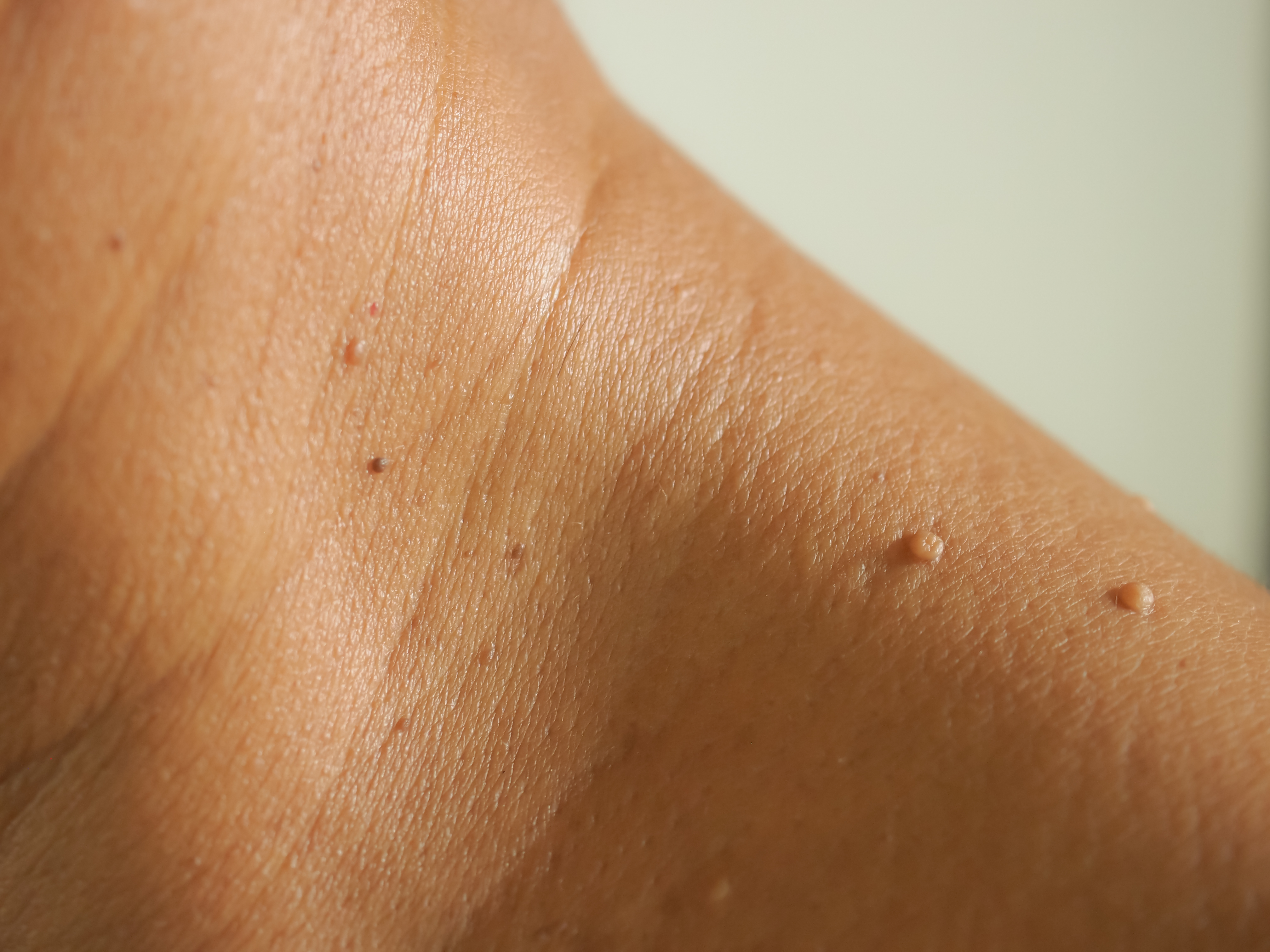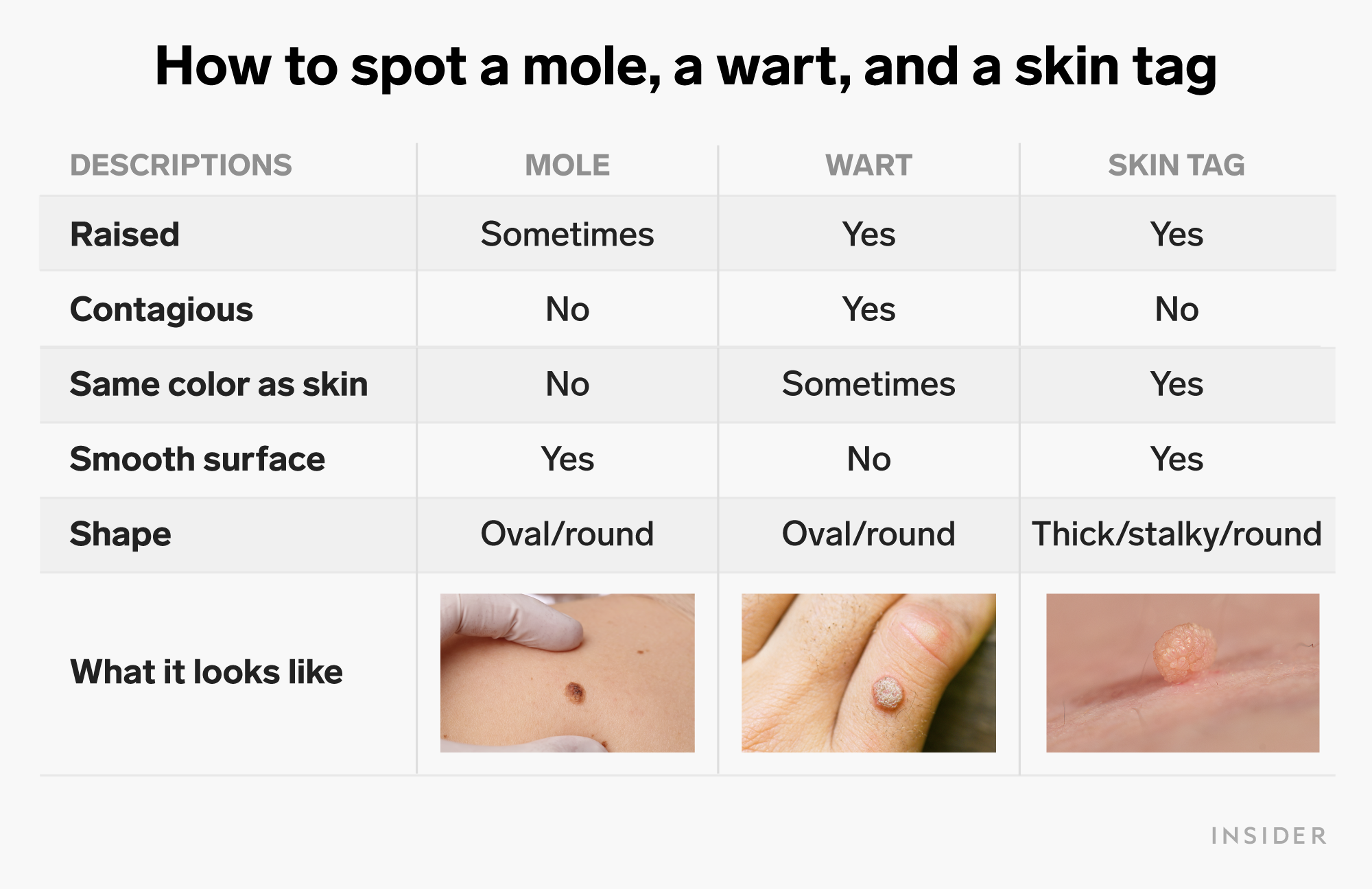
DUANGJAN J/Shutterstock
- Consult a medical professional to help you successfully and safely remove a skin tag.
- A medical professional will either snip, freeze, or burn your skin tag off.
- Skin tags are different from moles or warts and should be correctly identified first before you attempt to remove one.
- Visit Insider’s Health Reference library for more advice.
Skin tags, also known as acrochordons, are common, benign skin growths. As many as half of all adults have had one at some point in their life.
You might not even notice you have a skin tag until you feel it with your fingers: a tiny flap of skin that often appears in the skin folds, such as the armpit, groin, neck or on the eyelids. They are typically asymptomatic but can become painful if inflamed or irritated.
Here’s how to identify a skin tag and how to get rid of it.
What causes skin tags?
What causes skin tags is unknown. However, experts believe that friction between folds of skin plays a role in their development.
This may help explain why skin tags are more common in people who are overweight or obese. The tendency for skin tags also seems to increase with age.
Men and women are equally likely to develop skin tags.
How do I identify a skin tag?
A skin tag is usually the same color as the rest of your skin. It typically looks like a loose piece of skin attached by a stalk to your body, and you can often wiggle it back and forth with your fingers.
Skin tags can vary in size, and they often come in bunches. I don't think I've ever seen someone come in with just one skin tag," says Joyce Davis, MD, a dermatologist in private practice in New York, New York. "They also have a smooth surface, unlike a wart, which is typically rough or corrugated,"
Warts are also benign skin growths. But we know they're caused by a viral infection to the top layer of your skin, and unlike skin tags, they're contagious.
Skin tags are also different from another type of skin growth: a mole, or nevus. Unlike skin tags, some moles can lead to skin cancer. Moles can vary in size, and they can be any shade of pink or brown, whereas skin tags are typically the same color as your natural skin. Some moles are raised, while others are flat.
Here's how to tell the difference between a mole, a wart, and a skin tag:

How do I get rid of a skin tag?
To get rid of a skin tag, seek out a dermatologist.
It's important to note that you don't have to remove skin tags at all - they're harmless. Moreover, experts don't recommend trying to remove a skin tag at home for multiple reasons.
For one, "that skin tag has a blood vessel within it, so if you remove it, it can bleed," Davis says. And the bigger or wider the stalk of the skin tag, the more likely it is to bleed a lot.
"You may be quite surprised by the amount of bleeding that comes from something quite small," says dermatologist Jason A. Clark, MD, Adjunct Assistant Professor of Dermatology, Emory Department of Dermatology, who also doesn't advise self-removal.
Plus, you might wind up giving yourself a scar or an infection if the tool you use to remove it are not sterilized, Clark says.
To avoid scarring and infection, visit a doctor who will have several removal options for you:
- Snipping it off
- Freezing it off
- Burning it off (also known as cauterizing)
Davis favors snipping or burning to freezing. She typically injects the skin under the tag with a local anesthetic, snips off the tag with sterilized scissors, and then cauterizes the base to stop the bleeding. It's a very quick process, she says. If the tag is extremely small, she might skip the numbing agent, or she'll use a little anesthetic cream on the site.
"If it's very delicate, like if it's on the eyelid, I numb it with an anesthetic and then I cauterize it," she says. "That way, you get just a tiny scab."
Another reason to see a dermatologist is that you can get a correct diagnosis. That skin tag might just be a skin tag, but it could be something else more dangerous, says Clark.
One more thing to note: While skin tags don't grow back after they're removed, that won't stop you from growing new ones. "I can remove what you have," she says Davis. "But I can't prevent you from growing new ones."
See other health explainers:
- Stress doesn't cause acne, but it can increase your risk for breakouts
- 12 ways your skin can react to stress, according to a dermatologist
- Yes, pregnancy can cause acne but there are safe ways to treat it
- What causes a stye and the best ways to get rid of one










